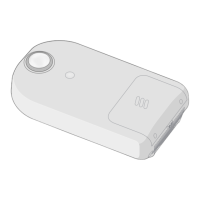Frequency range 0.3–50 Hz
Time history signal Verteq II
The radio operates reliably during random vibration as specified by test method IEC 60068-2-64 Fh method 1.
Random vibration, normal
operation
+12 m
2
/s
3
0.3 m
2
/s
3
−12 m
2
/s
3
Frequency range 5–10 Hz 10–50 Hz 50–150 Hz
3.8.4 Materials
All Ericsson products fulfill the legal and market requirements regarding the following:
– Material declaration
– Materials' fire resistance, components, wires, and cables
– Recycling
– Restricted and banned material use
3.9 Power Characteristics
This section describes the power supply requirements, power consumption, and circuit breaker recommendations for the
radio.
3.9.1 AC Power Characteristics
The power supply voltage for Radio 4408 is +36 V DC, provided by the Support unit.
Table 8 Street Radio 4408 AC Power Supply Requirements
Nominal voltage 110–480 V AC
Normal voltage range at radio input connector 110–480 V AC
Non-destructive range 0–528 V AC
Circuit Breaker Recommendations
The recommendations given in this section are based on peak power consumption and give no information on power
consumption during normal operation.
Table 9 Radio Circuit Breaker Recommendations
Street Radio 4408 B77G 4 × 5 16 16
(1) The absolute maximum circuit breaker class according to radio design restrictions.
3.9.2 Power Consumption
For information on power consumption, see Power Consumption Calculations and Power Consumption Data.
Characteristic Value
Conditions Values and Ranges
Unit (DC Powered) Output Power (W) Minimum CB Rating (A)
Maximum Allowed CB Rating
(A)
(1)

